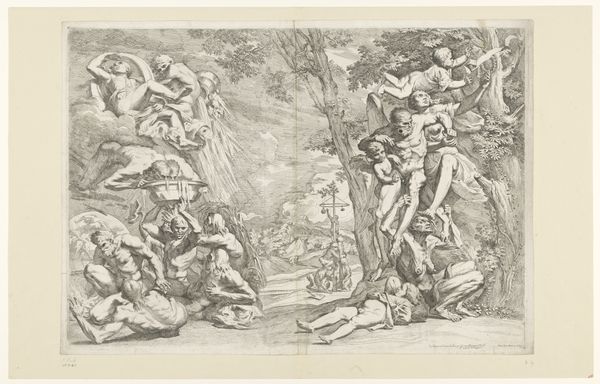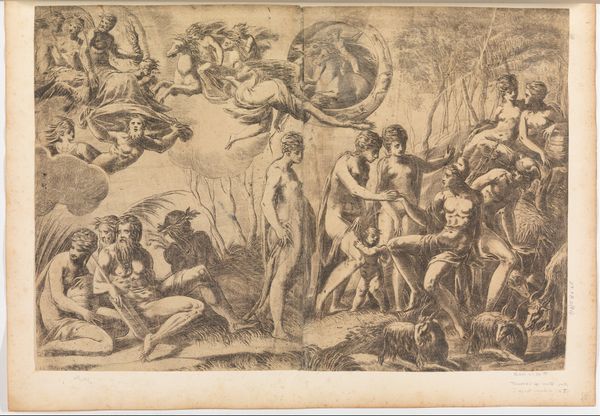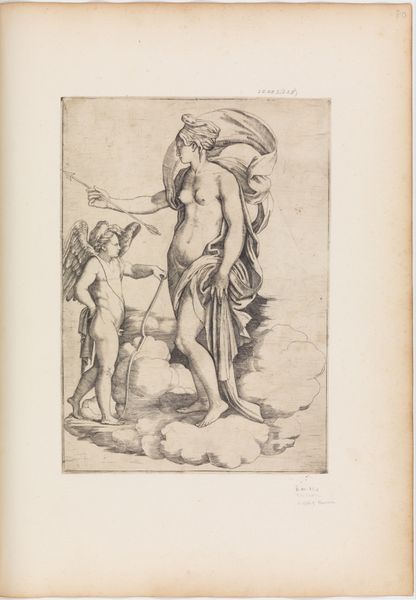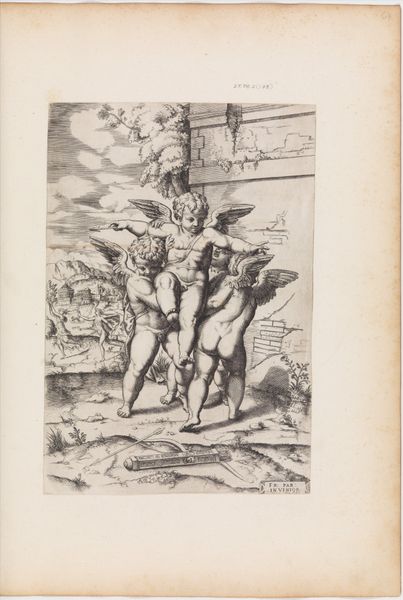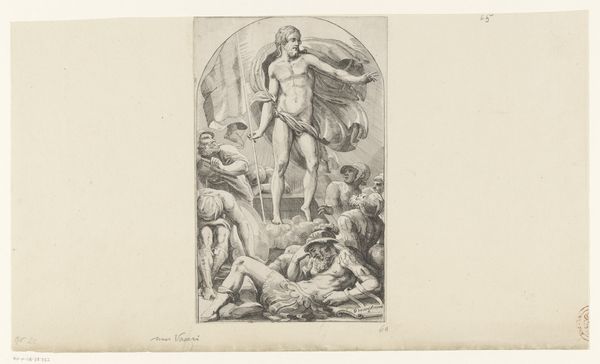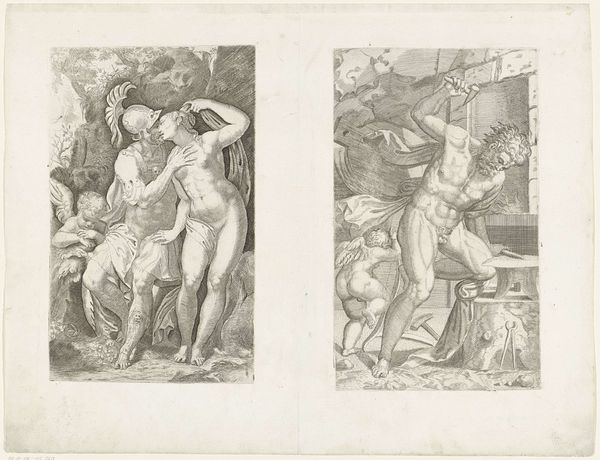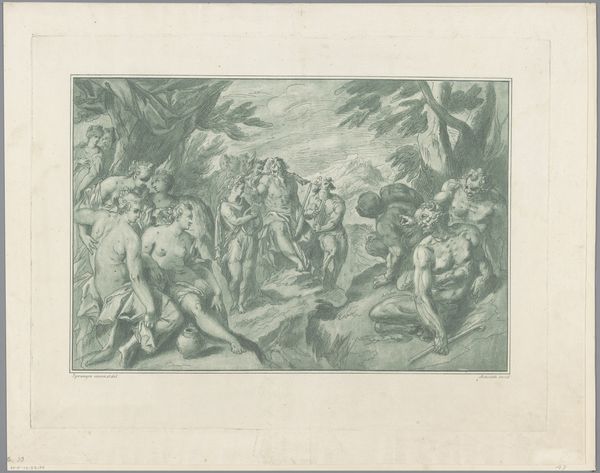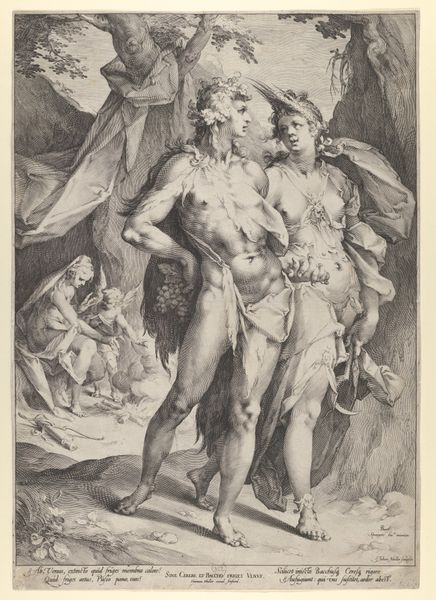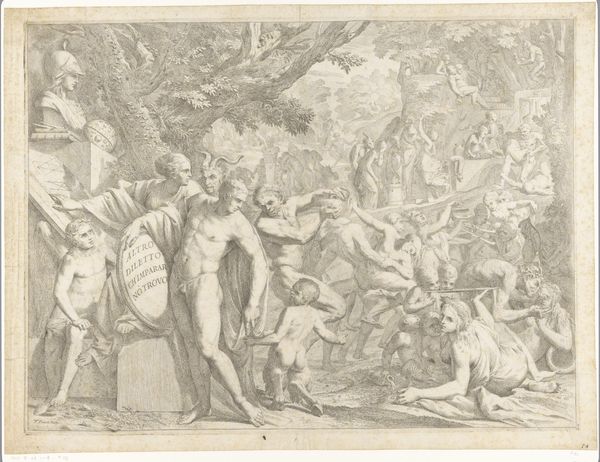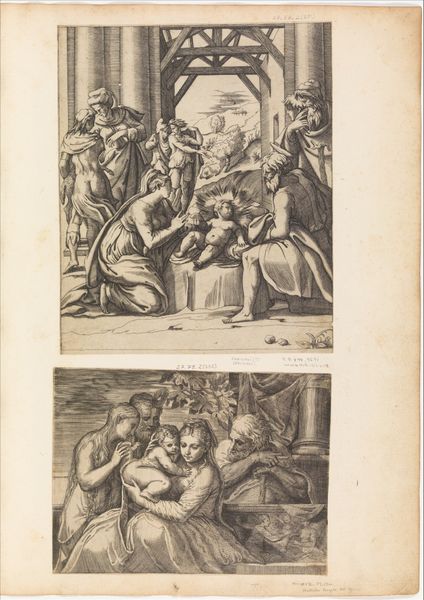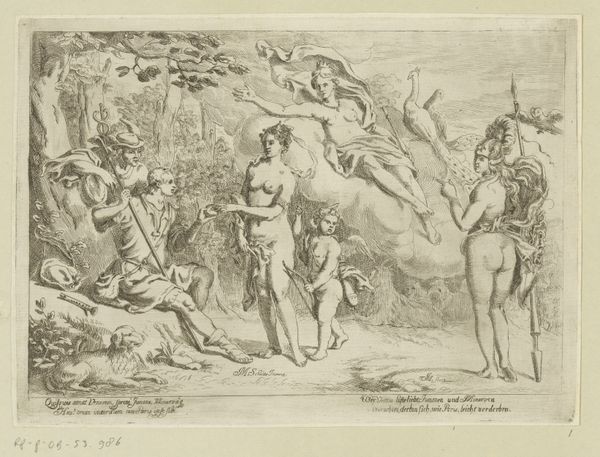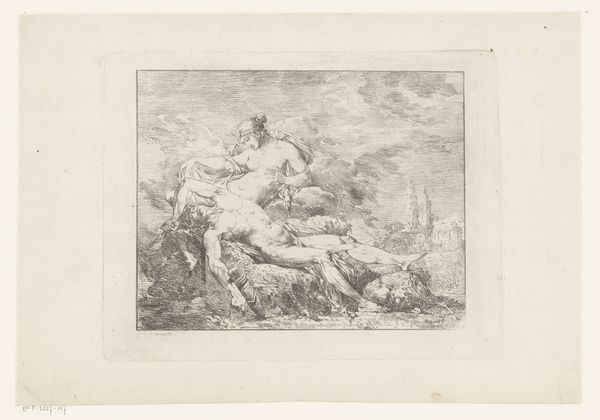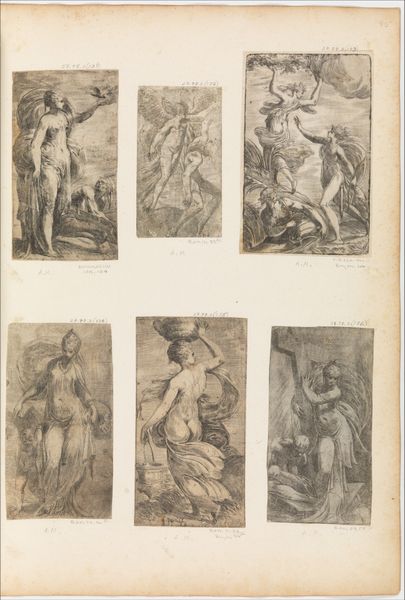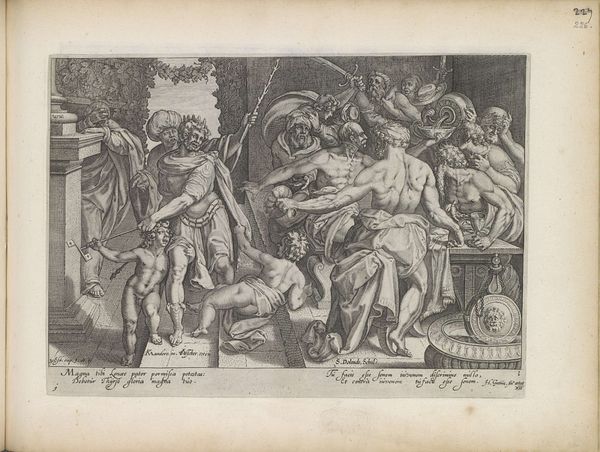
drawing, print, etching, engraving
#
portrait
#
drawing
#
allegory
# print
#
etching
#
mannerism
#
figuration
#
line
#
history-painting
#
nude
#
engraving
#
realism
Copyright: Public Domain
Editor: Here we have Marco Angolo del Moro's "Mars and Venus," created sometime between 1530 and 1600. It's an etching, almost a print, portraying scenes of classical allegory. What immediately strikes me is how these dual images create such a clear binary, though not necessarily one of opposition, as each compliments the other. How do you interpret this work, especially considering its material production as an etching? Curator: The materiality of the etching process is absolutely central to understanding this piece. Consider the labor involved: the meticulous work on the copper plate, the control and pressure, and the number of impressions that could then be made and distributed. This was about making images accessible, replicating these ideals for consumption by a wider audience beyond the wealthy elite. Do you think that influences the choice of subject matter? Editor: Certainly, making the mythological accessible reflects a societal shift. How would this affect artistic practices and perceptions of originality and value in artmaking during this time? Curator: Mass production, even in its early forms, challenges our traditional notions of the "aura" of a unique artwork. It also empowers the artist to become something of an entrepreneur, managing the means of production. Who controls the dissemination of these images, and how does that influence its message and reception? We must ask questions about accessibility, and whether these artworks reflect more democratic tendencies, or become commodities in and of themselves. Editor: That makes me think about how art transforms from singular masterpiece to a distributed commodity that can be disseminated, reshaping what art can mean. Curator: Precisely. Examining "Mars and Venus" through its materiality, we’re able to glimpse not just the artistic skill involved, but also the socio-economic forces shaping artistic production during the Renaissance. This perspective enriches the discourse about artistic values and reception! Editor: I think understanding the intersection between materiality and classical narratives really brings a richer sense of context to the art.
Comments
No comments
Be the first to comment and join the conversation on the ultimate creative platform.
